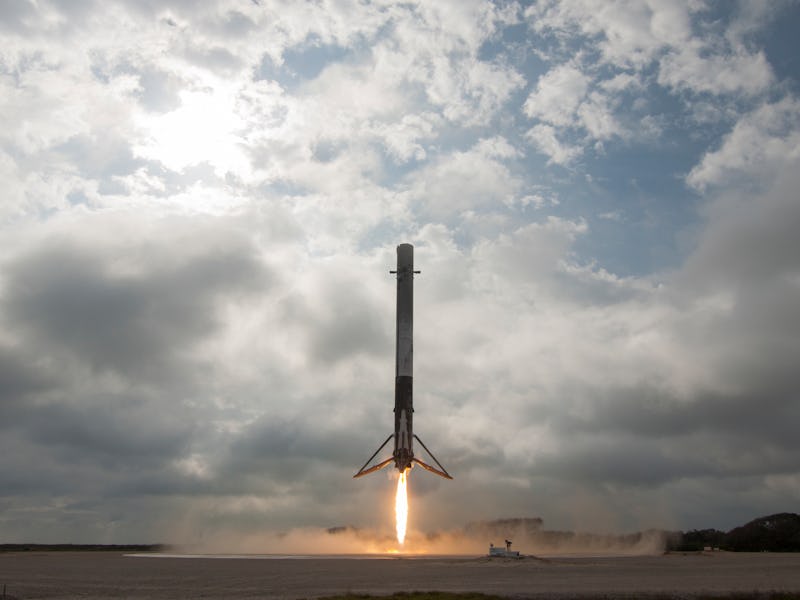On Sunday morning, SpaceX will launch a Falcon 9 rocket from the historic LC-39A launch pad at Kennedy Space Center.
The two-hour launch window opens at 7 a.m. Eastern. This mission, designated NROL-76, will launch a classified payload for the U.S. National Reconnaissance Office, leading many to conclude that it’s a spy satellite. Clues about the launch’s trajectory, as well as details about how the first stage booster will land, have led satellite observers to some interesting conclusions about the mission.
This is SpaceX’s first launch for just the NRO, though the office did include a cubesat research satellite in a 2010 SpaceX launch’s payload. In the past, the NRO has contracted with the Boeing and Lockheed Martin partnership, United Launch Alliance, to put its satellites into orbit. The success of NROL-76 will likely have a significant impact on SpaceX’s future prospects in the intelligence and defense business.
A Falcon 9 first-stage rocket booster back on Earth at the LZ-1 landing pad in February.
The first stage booster from NROL-76’s rocket, which the company will attempt to land, will touch back down on terra firma, not the ocean. While Elon Musk’s private spaceflight company has famously landed its rockets on droneships to recover and even reuse, you won’t get to see Falcon 9’s first stage land on one of the autonomous floating platforms for the upcoming launch. Instead, it will land back on Landing Zone 1 at Cape Canaveral Air Force Station. Here’s why:
Satellite observers are speculating that, based on the rocket’s trajectory, the NRO satellite will be placed into what’s known as a Molniya orbit, a highly elliptical orbit that gives the satellite lots of dwell time at its apogee. This allows the satellite to remain over the Northern Hemisphere for a much longer period of time than a satellite in geosynchronous orbit could. The sharp orbital inclination associated with a Molniya orbit would allow SpaceX to launch the NRO payload at a lower altitude, conserving more propellant. Landing on solid ground requires more fuel than landing on a droneship, so observers suspect that their conclusions about the Molniya orbit are correct.
A satellite orbiting Earth in a Molniya orbit completes a single orbit in 12 hours and spends a significant portion of it at apogee.
Since the Molniya orbit’s apogee is so far above Earth, it’s unlikely that the satellite is an imaging one. It’s more likely that it’s a data relay satellite, meant to bounce information from one point to another.
Whatever the case may be, you won’t be able to see it deploy. Due to the security restrictions surrounding this clandestine mission, the SpaceX webcast will cut off at main engine cutoff, before the second stage separates from the first stage. So if you want to watch, you still can, but you’ll only be able to watch the launch and landing. And even if you’re in the area, the launch will take place before Kennedy Space Center opens, which means the webcast is still your best bet.
Tune in on Sunday morning to check it out:
